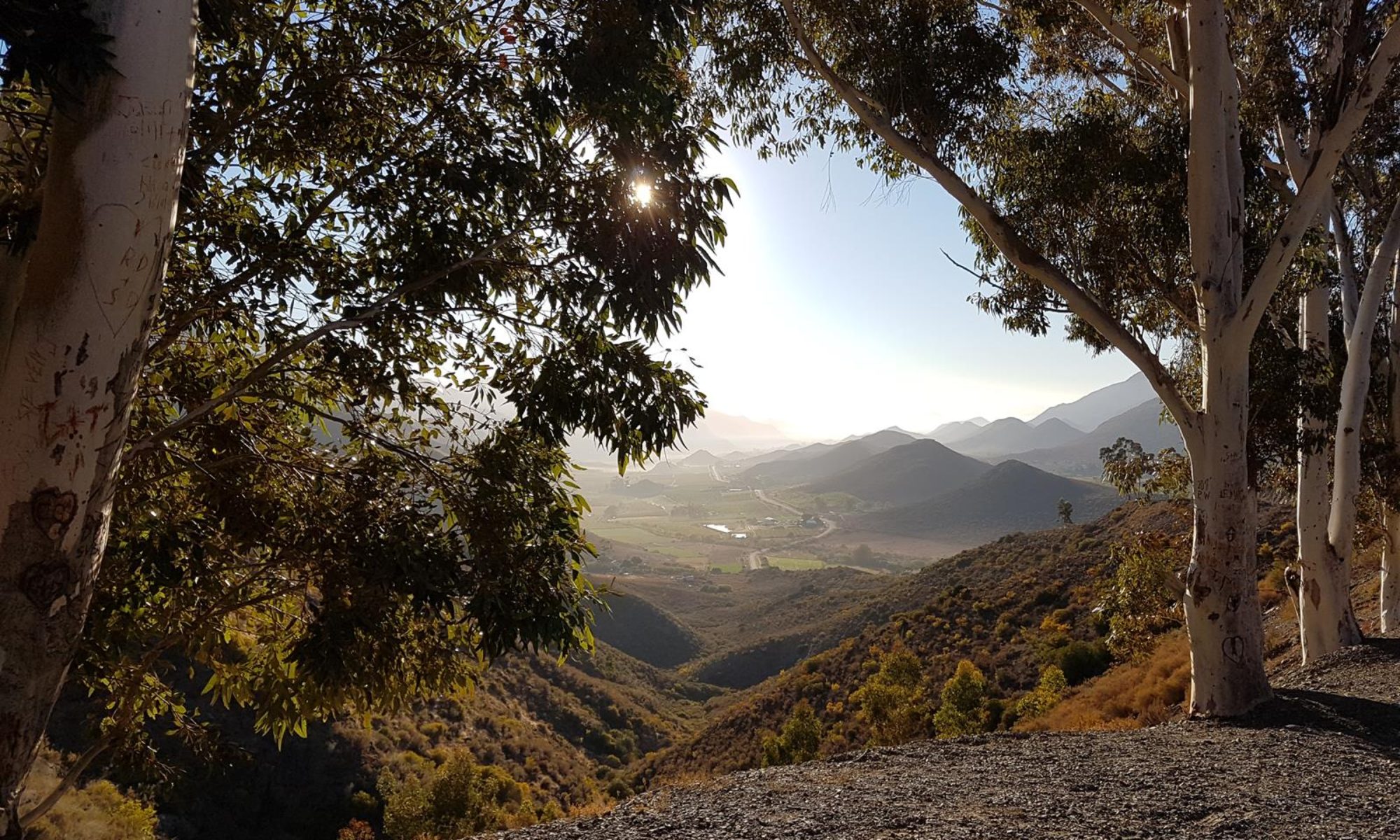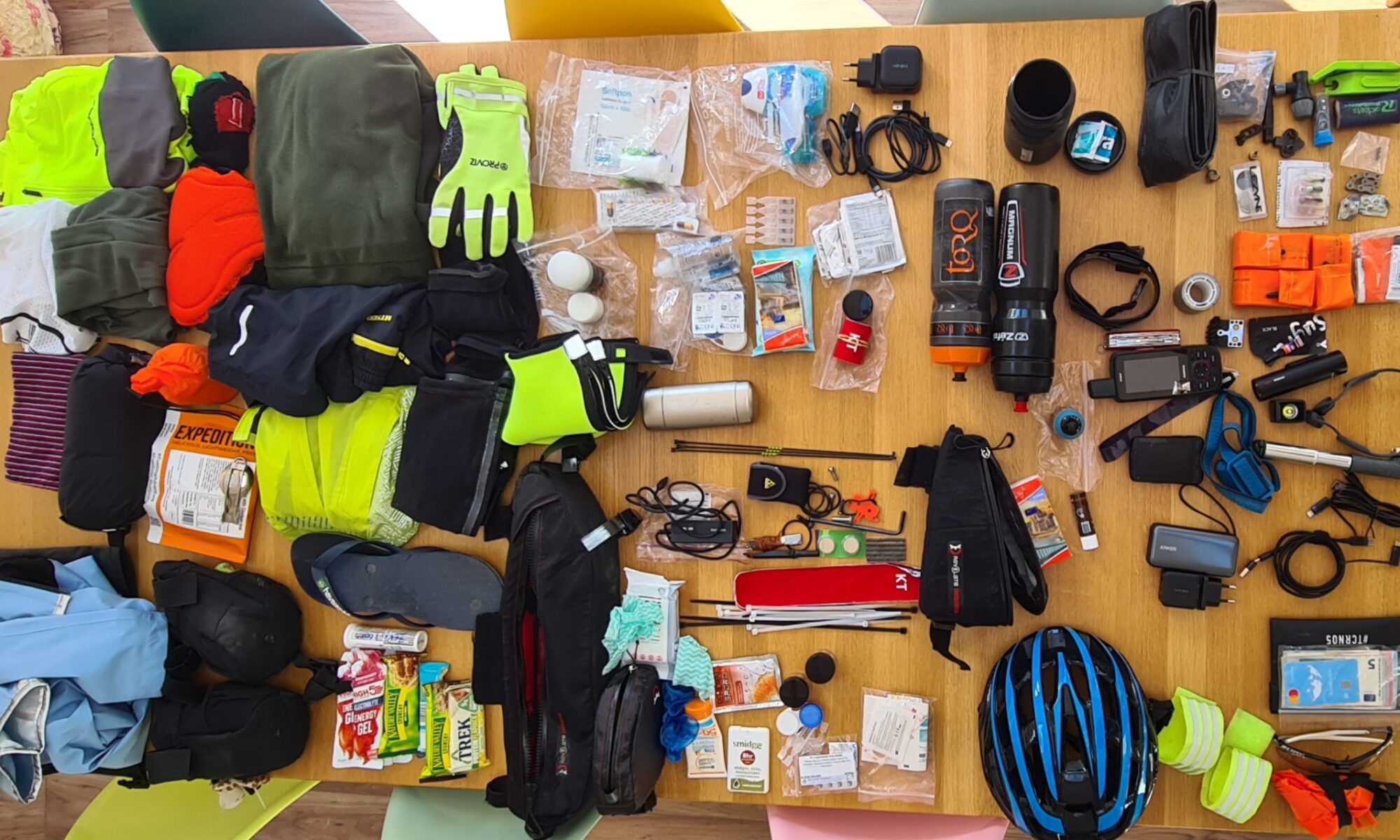As well as much needed back to back distance rides, an extra goal of the recent “Chepstow Weekend” (post coming soon) was testing the full NC4K rig. And I hadn’t even swung a leg over the bike before doubts began to emerge. The scales were reading 23.5kg loaded up but without water. To be honest, that number was probably similar to my H2H tour rig, although that being a leisurly tour I didn’t bother to weigh anything. The knowledge though that this new configuration was at least 1.5Kg heavier than either of my TCR rigs was troubling. Stood in the garage staring at the number, having weighed it again in the hope it was wrong, it felt excessive. And the next day, slogging up the dual hills into and out of the Honiton valley, “excessive” was probably the word my legs would have chosen too – if they’d had enough energy to speak. As buddy Chris van Zyl messaged on our long distance group:
That weight is going to hurt in the hills
He wasn’t wrong.
Luckily, help was on hand. The middle day of the long weekend of riding was a 215km Audax that buddy Simon Powell had travelled up to ride. It was also a mid point for him – half way through his RRtY series. Simon is significantly stronger and faster than me, and I didn’t really expect us to ride together all day. But we did. And at one of the stops we got into a deep dissection of my gear and where some weight and bulk could be saved. The latter of those being almost equally important, because if I could reduce packing space enough I could also lose the fork bags. Not only would that save even more weight, but they had been annoying the fuck out of me for the past day and a half of riding. Maybe I didn’t notice this riding through Scotland in 2020 , or maybe those mounts & bags sat differently, but every time I came to push off from a junction my knees bashed into the bag leaving me scuttling along to get momentum like a rat with a broken leg rather than surging ahead with the majesty of a race horse launching from the stalls. OK, yeah, maybe over dramatic, but you get the point. Anyhow, back to that coffee and cake chat – which went something like this:
Simon: What about TPU tubes instead of Butyl. They’re much lighter and smaller
Me: Yeah, but we’ll still only be talking a couple of hundred grams. And not enough space to lose the fork bags
Simon: OK, but if we keep going maybe the odd grams here and there will add up to enough.
So we kept going – thru the coffee, and back out onto the blissfully quiet lanes and tracks. In not long at all, a plan was beginning to emerge:
- TPU tubes save space and weight. In fact so much so, that 3 spares rather than 2 can be carried and still be smaller and lighter.
- Carrying a tubeless spare is possibly overkill, since the chance of seating it tubeless roadside isn’t certain anyway. A non tubeless spare would be lighter and smaller, and still enough to reach a shop and maybe get back to full tubeless. That not only saves tyre weight, but also carrying sealant. And there are now 3 tubes available to try and get to that shop
- Rather than a full bivvy, carry an emergency bivvi – which as well as saving weight, also removes the separate space blanke. I already have a lightweight summer sleeping bag, the emergency bivvi can double as an outer layer anywhere cold or exposed to rain. The sleeping bag is non negotiable as it adds comfort to any floor or bus shelter and greatly increases the chance of some actual sleep.
- Ditch the leisure gear (or most of it) – the Endura waterproof shorts can pair with the fleece to double as restaurant wear if needed. It’s not a huge weight saving, but it scores big time on that bulk part.
- Use the Ravemen CR1000 not the PR2000. The idea of the bigger light was it’s also a battery pack, but I have one of those anyway. As I head north the need for a front light and dark riding drops proportionally, and both the CR1000 and backup ION RT200 can run from the battery pack for extended duration.
- Just 1 emergency food ration pack. Most people will probably ride with none – but I have had too many occasions were bad luck or bad planning left me arriving late to a hotel with no food available. There’s a heavy price for that the next day. That 800Kcal from the ration pack can be a ride saver (or “next day saver” at least). And when it’s eaten, there’s a gape left in the bag to buy and stash another – which wouldn’t have been there if I’d packed to the gunnels without any food.
- Fewer snack bars – eat them and buy more as you go. To be fair, I knew I’d over packed these on the Chepstow weekend as I carried enough for 3 days just to avoid needing to shop.
Along with miscellaneous spares or duplicates trimmed down, this came to 3Kg saving. Yep, I’ll type that again, 3Kg!
The picture at the head of this entry shows the new kit all laid out. Here’s the revised list – and the full weight saving breakdown. And here is it all packed:

Joy of joys, it all just fits without needing the fork bags!


Impressive – That’s more than marginal gains. Ps, on a sidenote, I found it odd that I was able to read the whole post on email, from Jetpack, by WordPress no less, instead of just an intro paragraph and then a click through to the website to read the full version on there.
Thanks – yeah, it’s a big saving. I can see another potential ~500g or so further I could take the exercise, but it then starts to cut into the approach I want to take to the ride. So I’ll probably stop at this point. I think the email thing was because I forgot to put the “- More -” block in on the initial Publish.